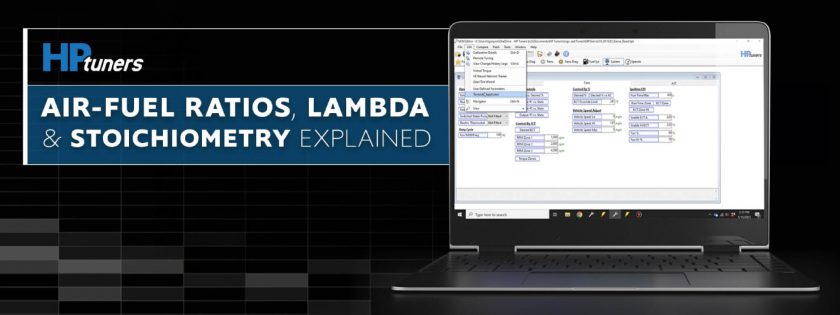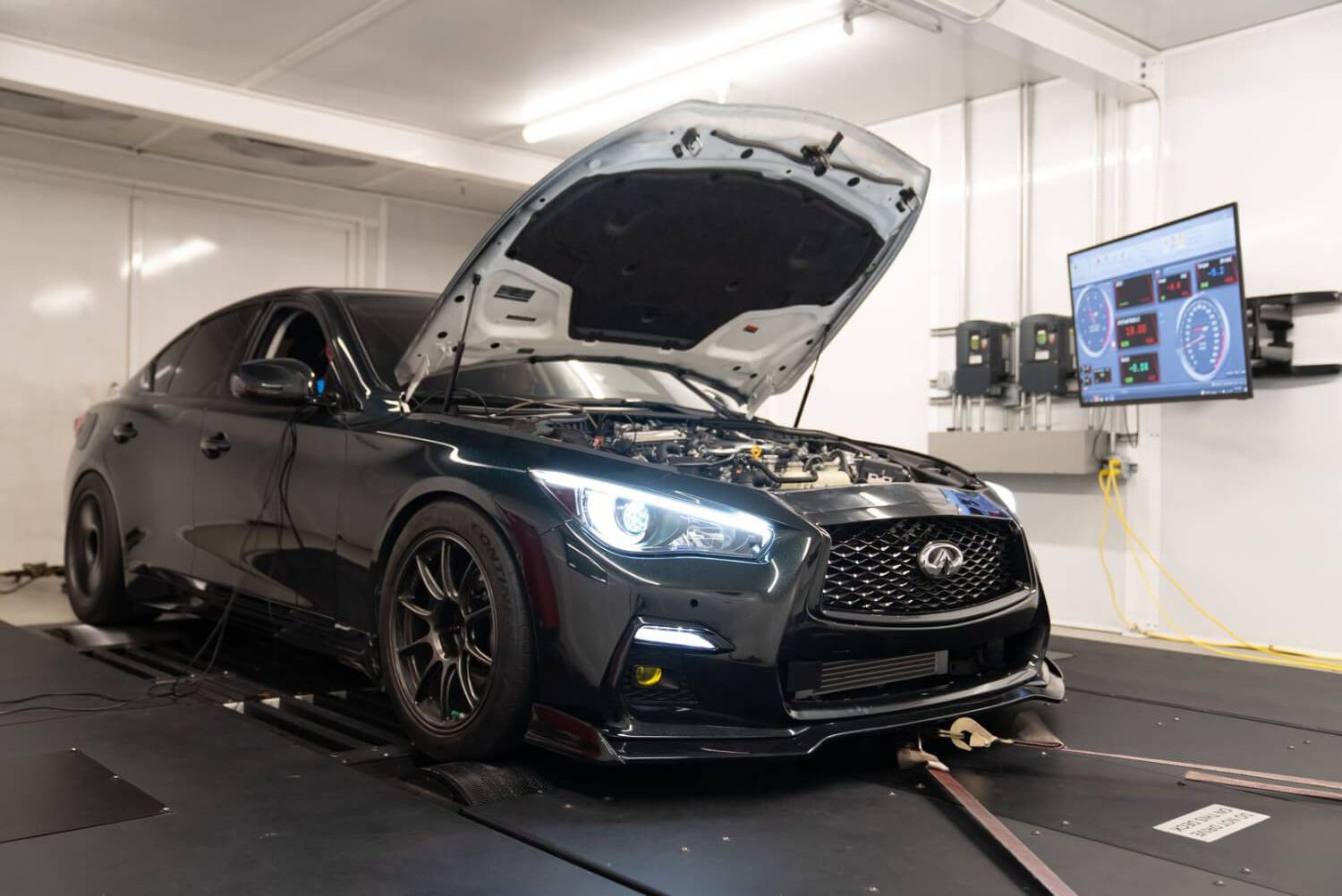Air-Fuel Ratios, Lambda, and Stoichiometry Explained
Published on: June 15, 2024Categories: Education

When it comes to automotive tuning, understanding air-fuel ratios, Lambda, and stoichiometry is crucial for achieving the best performance and efficiency. These concepts form the foundation of engine tuning and are vital for both beginners and seasoned enthusiasts. Let’s delve into these topics to shed some light on their importance and how they work together in the tuning process.
What is Air-Fuel Ratio?
The air-fuel ratio (AFR) is a critical measure in engine tuning. It represents the ratio of air to fuel in the combustion chamber. This ratio is essential because it determines the combustion efficiency and, consequently, the engine’s performance, fuel economy, and emissions.
A wideband sensor and gauge are used to read the AFR by measuring the amount of air in the exhaust stream. This reading is often misunderstood; many believe it measures fuel content, but it actually measures air content. The AFR is crucial in determining whether the engine is running “rich” or “lean.”
- Rich Mixture: A rich mixture has a higher fuel content relative to air. For instance, a gasoline AFR of 9:1 indicates a rich condition, meaning there is a lot of fuel and not much air in the exhaust stream.
- Lean Mixture: Conversely, a lean mixture has more air than fuel. A gasoline AFR of 20:1 is considered lean, with a high air content and low fuel content in the exhaust.
Finding the optimal AFR is essential for balancing performance and fuel economy. For pure gasoline, the ideal stoichiometric ratio is 14.7:1. This ratio provides the best compromise between performance, fuel economy, and emissions. It’s important to note that you shouldn’t focus too intently on this ideal number, often the best performance and balance of drivability is found under a wide range of values. This is why datalogging and dyno tuning is important, to determine what ratio works best for your application within certain conditions.

Understanding Stoichiometry
Stoichiometry is the science of calculating the exact quantities of reactants and products in chemical reactions. In the context of engine tuning, it refers to the ideal AFR where the complete combustion of fuel occurs. For pure gasoline, this ideal ratio is 14.7:1.
At stoichiometric conditions, the engine achieves:
- Optimal Performance and Fuel Economy: Running at 14.7:1 should, in theory provide the best balance between power and efficiency.
- Clean Emissions: Complete combustion at this ratio minimize harmful emissions.
However, modern gasoline often contains ethanol, which affects the stoichiometric ratio:
- E10 (10% Ethanol): The stoichiometric ratio is 14.1:1.
- E85 (85% Ethanol): The ratio drops to 9.7:1.
- Pure Ethanol (E98): The stoichiometric ratio is 9:1.
- Methanol: The stoichiometric ratio is 6.5:1.
With all of these ratios in mind, you should know that you can’t simply input the ideal value for all cells in your fuel table. Operating conditions will affect the performance, efficiency, and emissions of your engine and this is where tuning becomes an invaluable tool. It’s important to use all of the data and tools at your disposal in order to identify where the engine is happiest and strike a balance between all three.
Introduction to Lambda
Lambda (λ) is a universal constant that simplifies tuning across different fuels. It is defined as the measured AFR divided by the stoichiometric AFR for a given fuel. Lambda provides a standardized way to compare and adjust AFRs regardless of the fuel type.
- Lambda = 1.0: Represents the stoichiometric point.
- Lambda < 1.0: Indicates a rich mixture.
- Lambda > 1.0: Indicates a lean mixture.
For example, if you measure an AFR of 14.7 with pure gasoline (stoichiometric AFR is 14.7), Lambda is 1.0. This standardization is helpful when tuning with different fuels, as it allows you to aim for the same Lambda value (1.0) to achieve stoichiometry.
Practical Applications in Tuning
In practical tuning scenarios, understanding these concepts helps in optimizing engine performance under various conditions:
- Idle and Part Throttle: Targeting the stoichiometric ratio ensures smooth running and good fuel economy.
- Performance Tuning: For naturally aspirated engines, a gasoline AFR of 12.8:1 to 13:1 is typically optimal for maximum torque and horsepower. This corresponds to a Lambda range of 0.83 to 0.85.
- Forced Induction Engines: These engines require richer mixtures (lower Lambda) to prevent knocking and manage higher cylinder pressures. A gasoline AFR of 11.5:1 (Lambda 0.78 to 0.8) is often used.
Disclaimer: These are general values and should not be considered as perfect targets for your calibration. Please consult with a professional tuner for your vehicle about what is optimal given its modifications and geographical location.
Conclusion
Mastering air-fuel ratios, Lambda, and stoichiometry is essential for anyone involved in automotive tuning. These principles ensure that engines run efficiently, perform optimally, and comply with emission standards. Whether you’re tuning a naturally aspirated engine or a forced induction setup, understanding and applying these concepts will help you achieve the best results. Stay tuned for more in-depth tutorials and advanced tuning techniques in future posts.
For more insights into tuning and to explore HP Tuners’ products, check out our latest videos and follow us on social media. Happy tuning!


